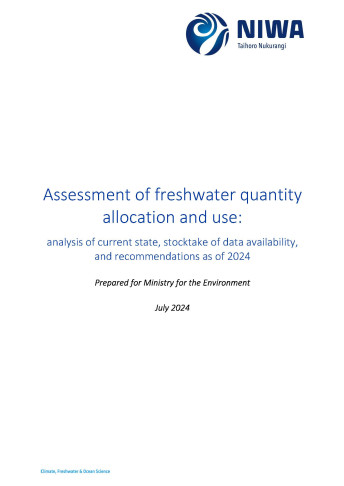This report completes a stocktake of readily available information on freshwater take consents and actual use from regional councils around New Zealand. Based on the available data, it provides a detailed look at how freshwater is allocated and used across four regions in New Zealand – Hawke’s Bay, Marlborough, Canterbury, and Southland.
This report completes a stocktake of readily available information on freshwater take consents and actual use from regional councils around New Zealand. Based on the available data, it provides a detailed look at how freshwater is allocated and used across four regions in New Zealand – Hawke’s Bay, Marlborough, Canterbury, and Southland.
The study focuses on ‘water accounting’, which involves collecting and analysing data on water consents, actual use, restrictions, and environmental impacts. It highlights the competing demands for water – environmental, human health, and economic – and the challenges in balancing these needs.
Key findings show that water use data is inconsistent across regions, with gaps in metering, formatting, and quality. Actual water use is often much lower than what is consented, but this does not necessarily mean there is water ‘available’ when users need it. The report also estimates water use from permitted (unconsented) activities, such as household and livestock needs, which can be substantial in some regions.
To improve water management, the report recommends a nationally consistent, comprehensive, and purpose-fit water accounting system that captures spatial and temporal variability and uses standardised definitions and methods.
